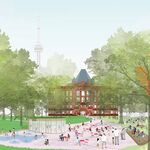On a cold, windy Remembrance Day, a group of students and young professionals gathered at historic Campbell House at Queen and University to speculate on the future of Toronto’s Coach Terminal. Part of the Architectural Conservancy of Ontario's (ACO) annual NextGen Design Charrette, the event focuses on the adaptive reuse and rehabilitation of some of Toronto’s under-appreciated urban spaces from a variety of perspectives, including the fields of architecture, urban design, planning, landscape architecture, environment studies, built history, interior design, and heritage conservation. Following a typical design charrette format, participants are distributed into groups based on their background and interests, and are given a very short amount of time to put together a proposal for the topic at hand. The Charrette is especially useful for those starting out their careers who can hear insights from different fields that they wouldn’t necessary have been exposed to during their education.
 ACO NextGen Design Charrette at the Toronto Coach Terminal. Photo by Stephanie Mah.
ACO NextGen Design Charrette at the Toronto Coach Terminal. Photo by Stephanie Mah.
The Toronto Coach Terminal was chosen for the exercise as it may soon no longer serve its purpose; Toronto is getting a new terminal next to Union Staton in a few years' time. Built in 1931, the Coach Terminal is an example of Art Deco architecture that has survived the decades despite its prominent location at Dundas and Bay. The design charrette considers possibilities of conserving the heritage building before it becomes derelict and adapting it into a creative space that enhances both the local community and city at large.
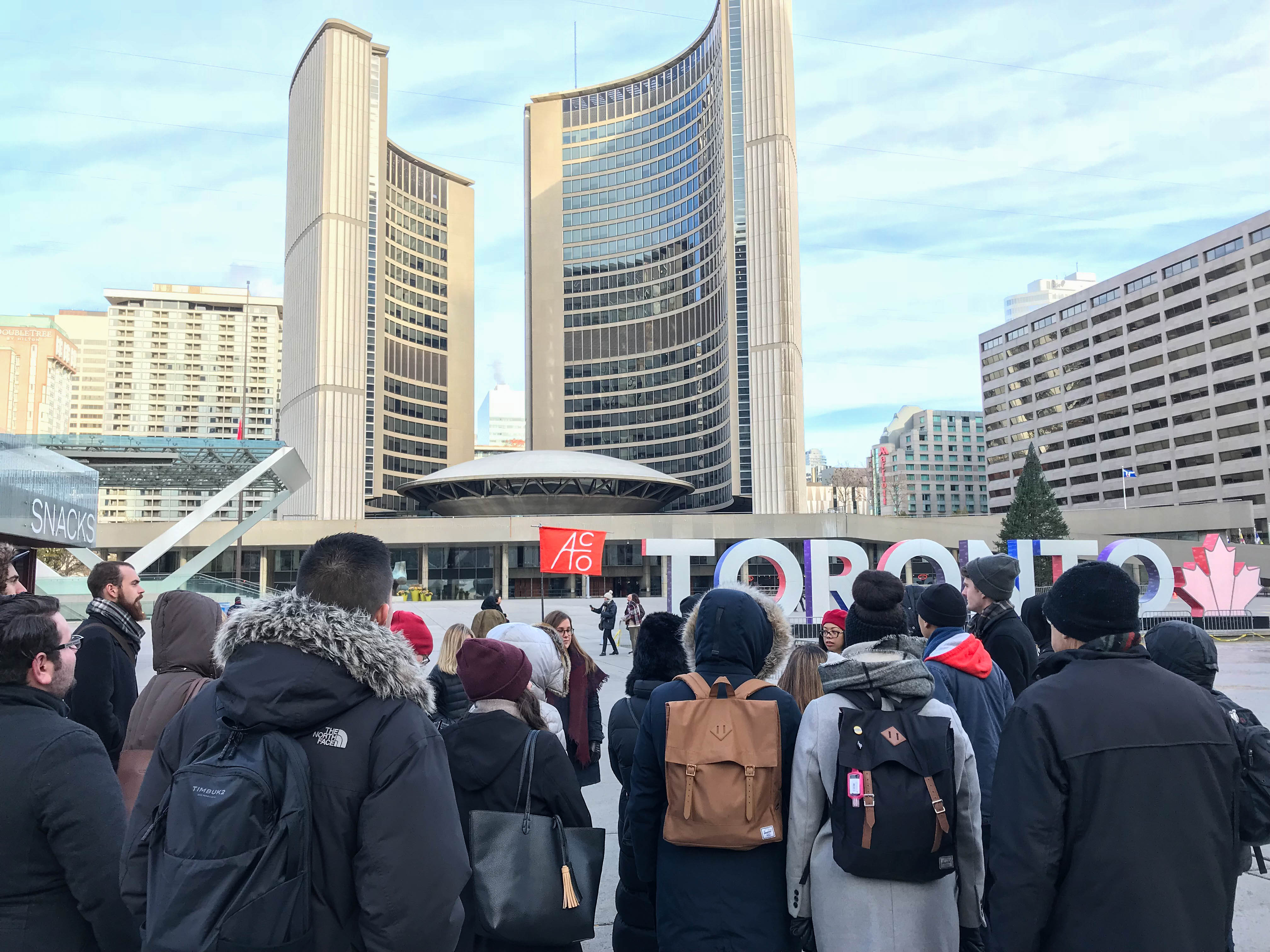 Tatum Taylor leads the ACO NextGen Design Charrette on a tour through The Ward. Photo by Stephanie Mah.
Tatum Taylor leads the ACO NextGen Design Charrette on a tour through The Ward. Photo by Stephanie Mah.
The day started with tour of the neighbourhood—which prior to the construction of New City Hall was known as The Ward—by Tatum Taylor, Project Manager with ERA Architects, and Co-Editor of The Ward: The Life and Loss of Toronto’s First Immigrant Neighbourhood (Coach House Books 2015). It was timely for the Charrette to be held on Remembrance Day, Taylor mentioned before starting the tour, because it reminds us that society is selective of the memories it chooses to carry forward to the future—whether it be events, memorials, or buildings. She then asked us to question what stories are not remembered by the monuments in the area: some that we passed on the tour included Peace Through Valour (recognizing Canadians who fought in the Italian Campaign of WW2), a monument to Sir Winston Churchill, and a plaque honouring Jean Lumb (social activist for Chinese Canadian culture of the area).
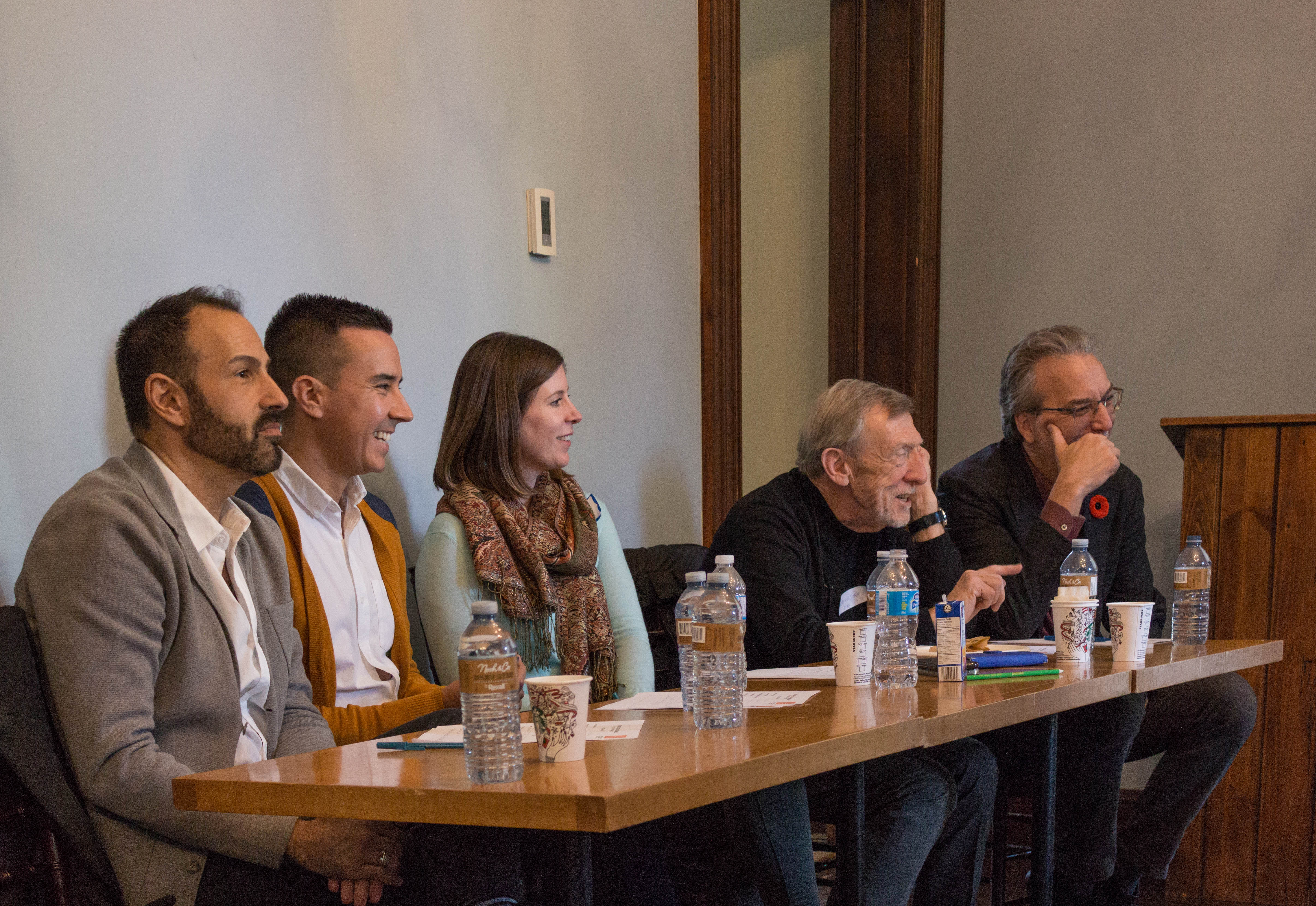 A panel of local experts from left to right: Steven Bell, Steven Ziegler, Sarah Hill, Robert Allsopp, and Brian Brownlie.
A panel of local experts from left to right: Steven Bell, Steven Ziegler, Sarah Hill, Robert Allsopp, and Brian Brownlie.
Following the tour, participants met in their groups for a couple hours of brainstorming and preparing presentation materials. The groups then showcased their efforts to a panel of local experts: Steven Ziegler, Development & Construction Facilitator at Downtown Yonge BIA; Steven Bell, Program Manager, Heritage Preservation Services at City of Toronto; Sarah Hill, Senior Consultant at Lord Cultural Resources; Robert Allsopp, Partner at DTAH; and Brian Brownlie, Partner at DTAH. The four groups all focused on conserving and rehabilitating the heritage fabric of the Terminal, and they all incorporated culinary elements into their proposals.
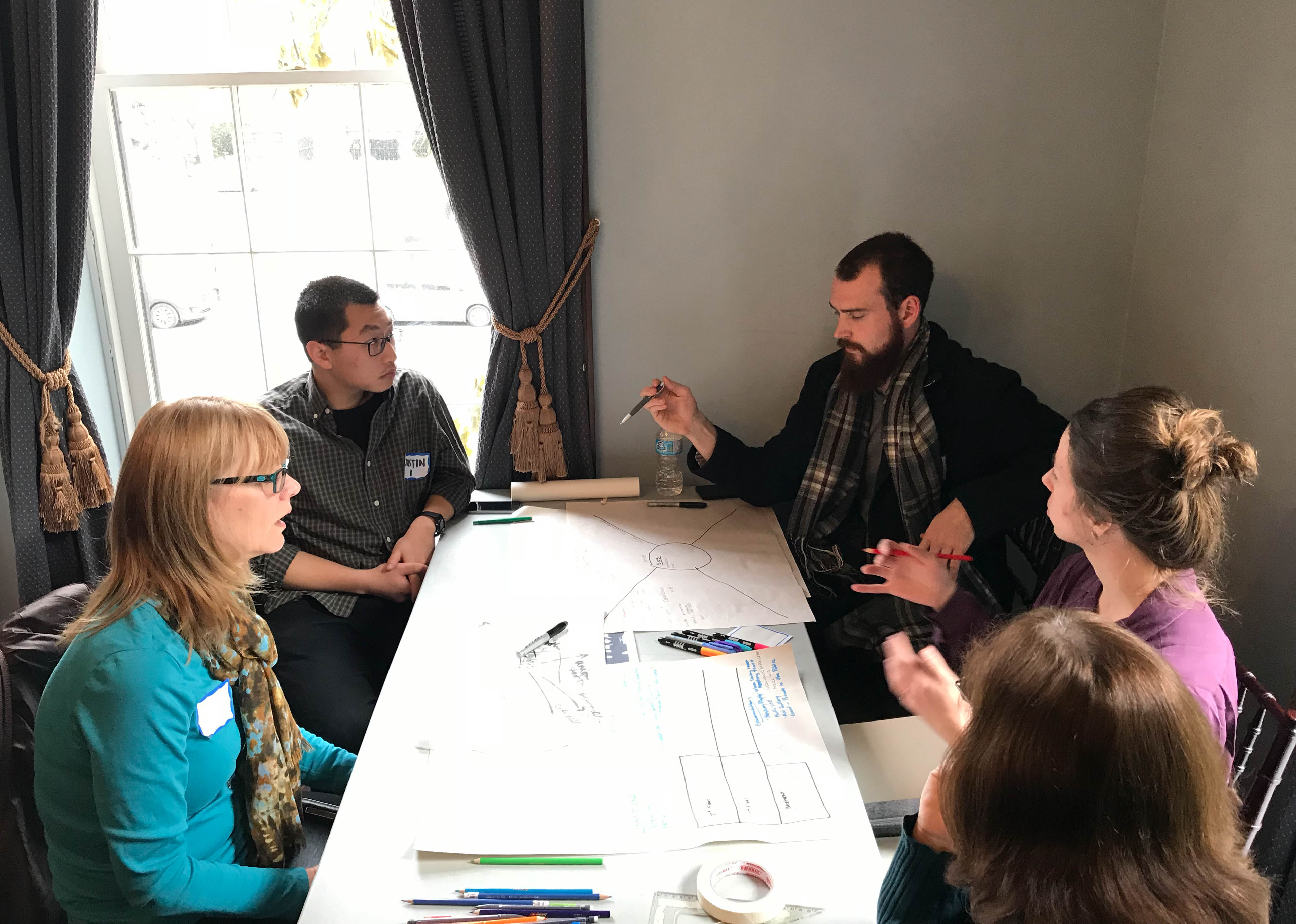 Group 1 preparing their proposal for the ACO NextGen Design Charrette. Photo by Stephanie Mah.
Group 1 preparing their proposal for the ACO NextGen Design Charrette. Photo by Stephanie Mah.
The first group proposed that the Terminal be converted into an e-waste recycling centre. They argued that the station once facilitated the movement of people, and this new program would facilitate the movement of products. Visitors to the Terminal would drop off discarded technology, and would have the option to learn how to repair the items, or how to mine the old products for useful resources. To support the main focus of an e-waste facility, they also included a landscaped area, café, and lounge. While the panel received this proposal favourably, they felt that it hinged too much on the one program and would have liked more breadth.
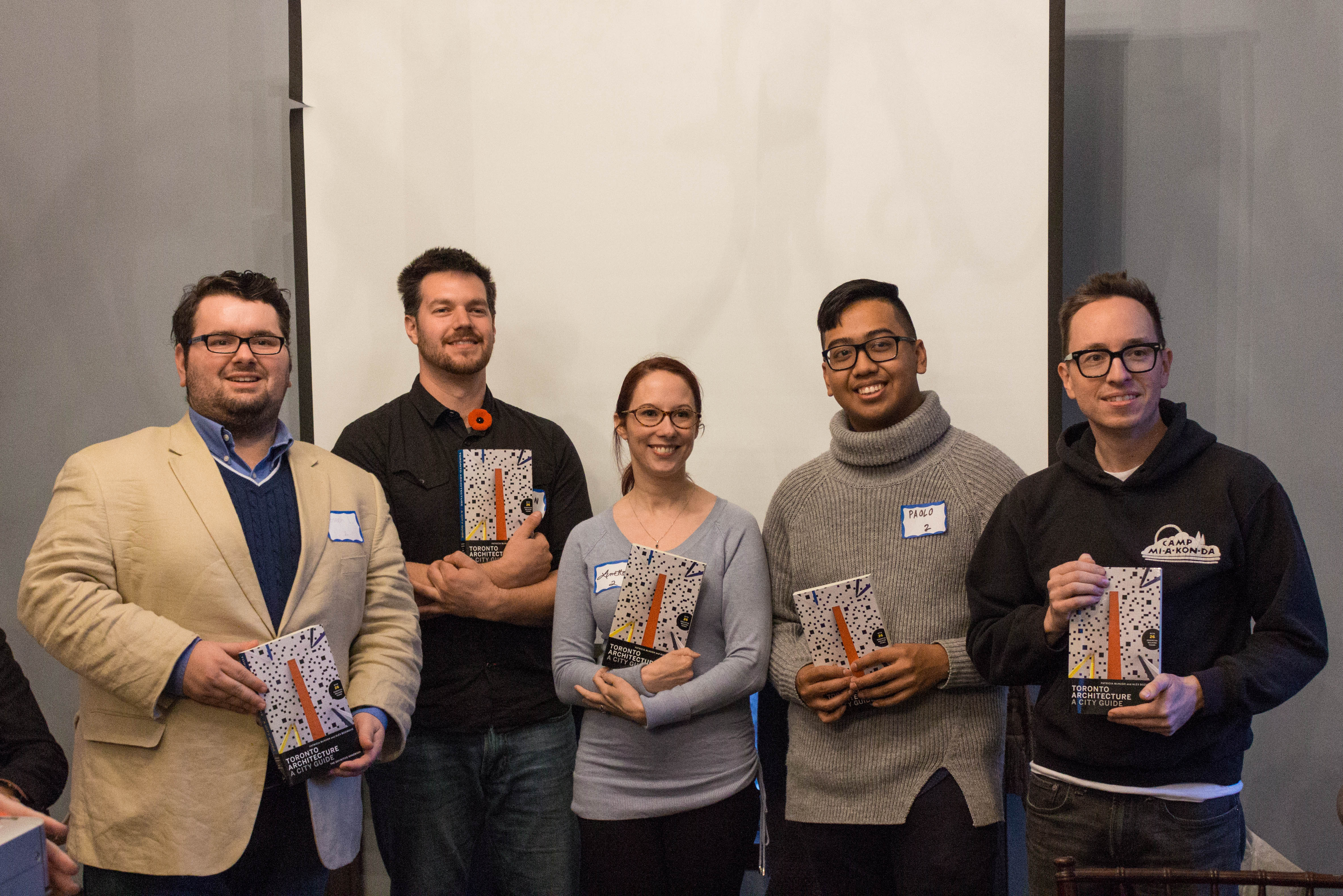 The winning group holding their prize: a copy of Toronto Architecture: A City Guide. Photo by Stephanie Mah.
The winning group holding their prize: a copy of Toronto Architecture: A City Guide. Photo by Stephanie Mah.
Titled Grey Coach Commons, the winning proposal increased the density of the site considerably, and was "very mature and developed in terms of its program," said panel member Steven Bell. It included a residential and commercial tower, a cultural centre, a museum, a food hall, several retail units, a lobby area, and a connection to the PATH underneath. They intended the museum to house a collection of 500,000 artifacts from The Ward that were discovered in a recent excavation adjacent to city hall. (This collection is on display in the city hall lobby for the next 5 years, but the number of artifacts is overwhelmingly large and would benefit from a dedicated space.) The panel felt this proposal was most appropriate for its context, given that the city is looking at alternative land uses especially within this highly sought after neighbourhood.
Other presentations offered a rich variety of programs and imaginative thinking for the potential for the Toronto Couch Terminal. Group 3 expressed a desire to engage strongly with the layers of history embedded in the site by asking questions: How did people live in The Ward? What storey would they want to tell? How do we best carry the past into the future? They proposed spaces that would facilitate honest conversations with the history of the site, including a publicly accessible exhibition, an open green space, a market, several incubator studios, and a number of live/work units. Group 4 focused on culture and the arts by designing a terraced grassy amphitheatre, a rooftop community garden, and a food market. They envisioned the space facilitating the artistic ambitions of the neighbourhood, and identified opportunities for partnerships with nearby cultural institutions that require seasonal overflow space, such as the adjacent mosque Masjid Toronto. While the judges had to choose only one group, they applauded all presentations for their unique ideas and respect for the heritage building.
While nothing has been proposed for the Toronto Coach Terminal yet, the varied interventions brainstormed by each group demonstrates some of the potential of the Toronto Coach Terminal in the future. Initiatives such as the ACO Design Charrette show that students and young professionals are eager to preserve heritage structures in Toronto. Leading a pro-active conservation effort will help to ensure that an eventual redevelopment of the site will be sensitive to its Art Deco history.

 2.9K
2.9K 












